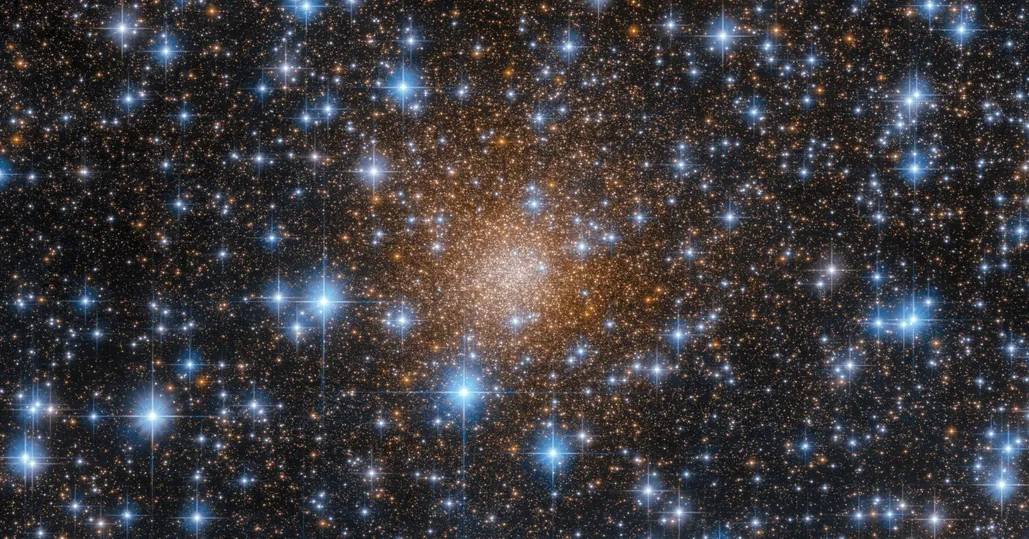NASA / ESA Hubble team recently released a new photo showing that the soft red tone of globular cluster liller 1 is partially obscured by dense and dazzling blue stars In fact, it is precisely because of Hubble's wide field camera 3 (WFC3) that we can see liller 1 so clearly in this picture, because WFC3 is very sensitive to the wavelength of light that cannot be seen by human eyes.

Liller 1 is only 30000 light-years away from the earth - making it a relatively close "neighbor" in astronomy. But it is located in the "bulge" of the Milky Way galaxy, the dense dust area in the center of our Milky Way galaxy. Because of this, liller 1 is seriously blocked by interstellar dust, which is very effective in scattering visible light (especially blue light). Fortunately, some infrared and red visible light can pass through these dust areas. Hubble's WFC3 is sensitive to both visible and near-infrared wavelengths, enabling the Hubble team to "see through" obscured dust clouds and provide this magnificent view of liller 1.
Liller 1 is a particularly interesting globular cluster because, unlike most similar clusters, it contains very young and very old stars. Globular clusters usually contain only ancient stars, some as old as the universe itself. Liller1 contains at least two different star groups with significantly different ages: the oldest star is 12 billion years old, while the youngest star is only 1-2 billion years old. This led astronomers to conclude that the star system could form stars over a particularly long period of time.